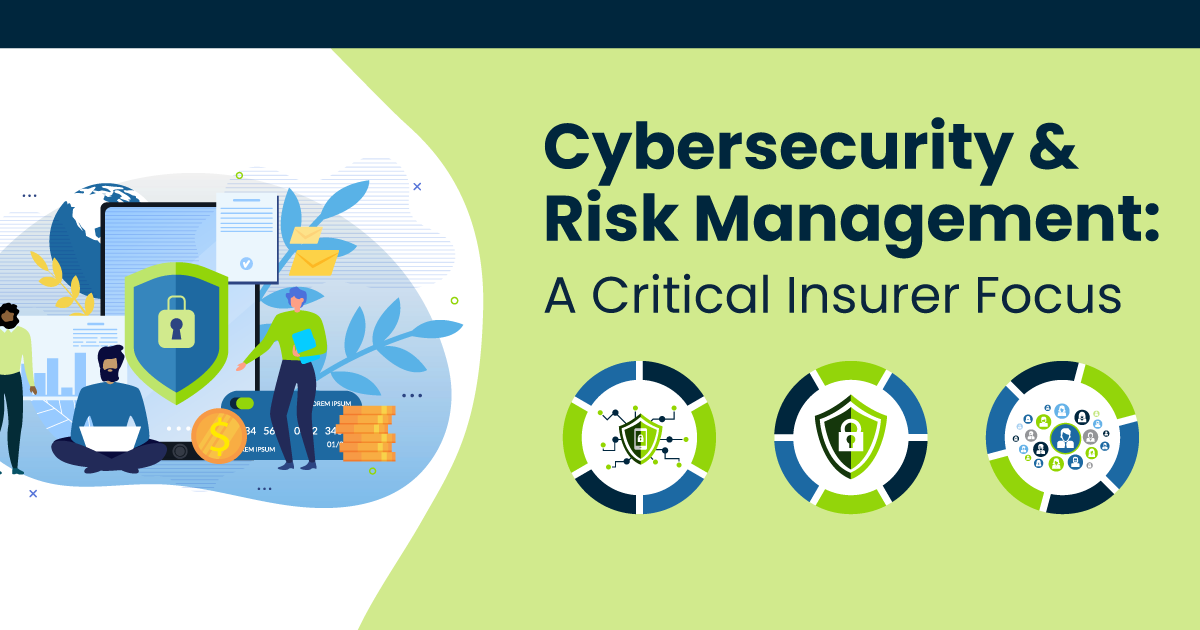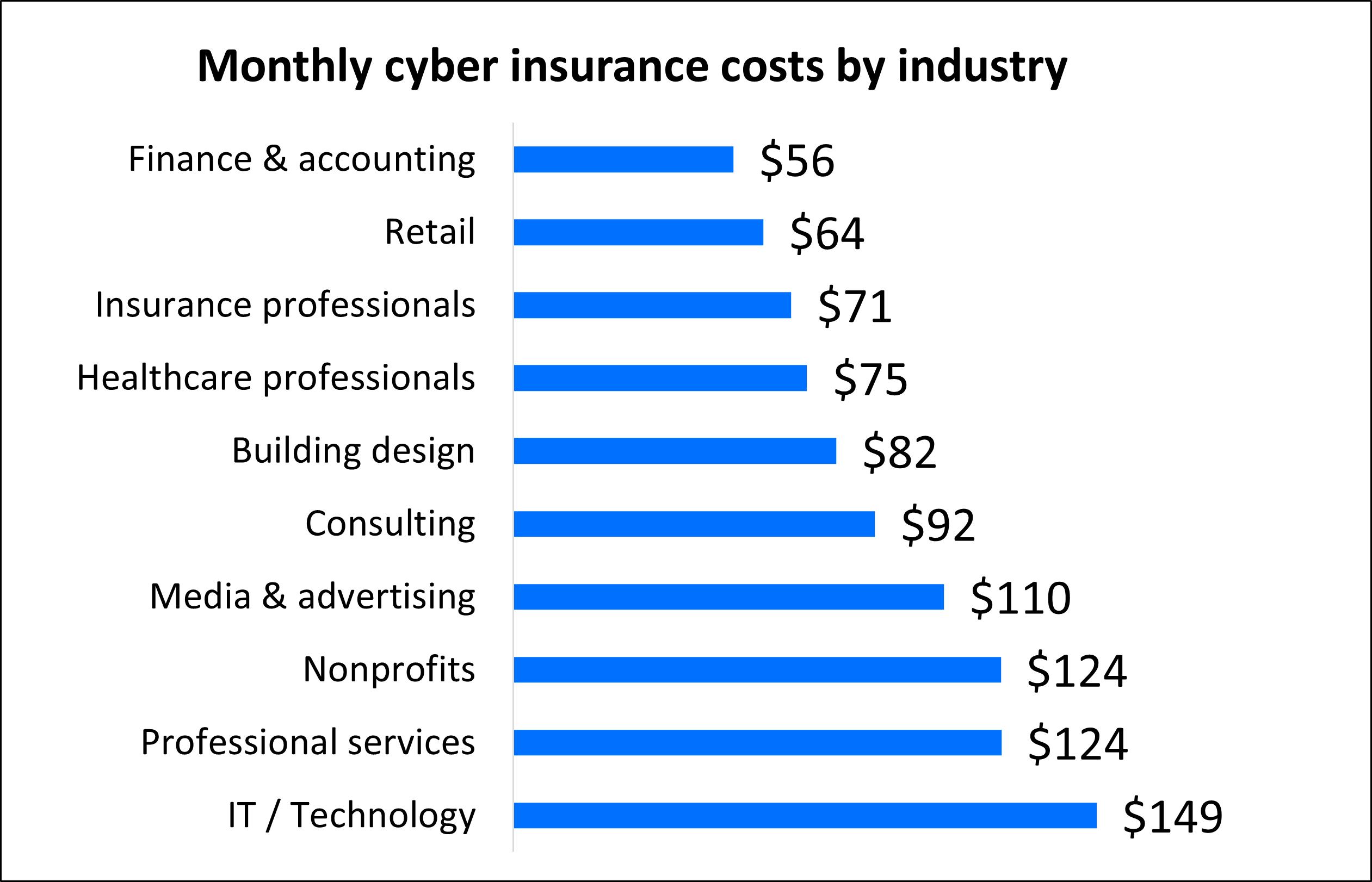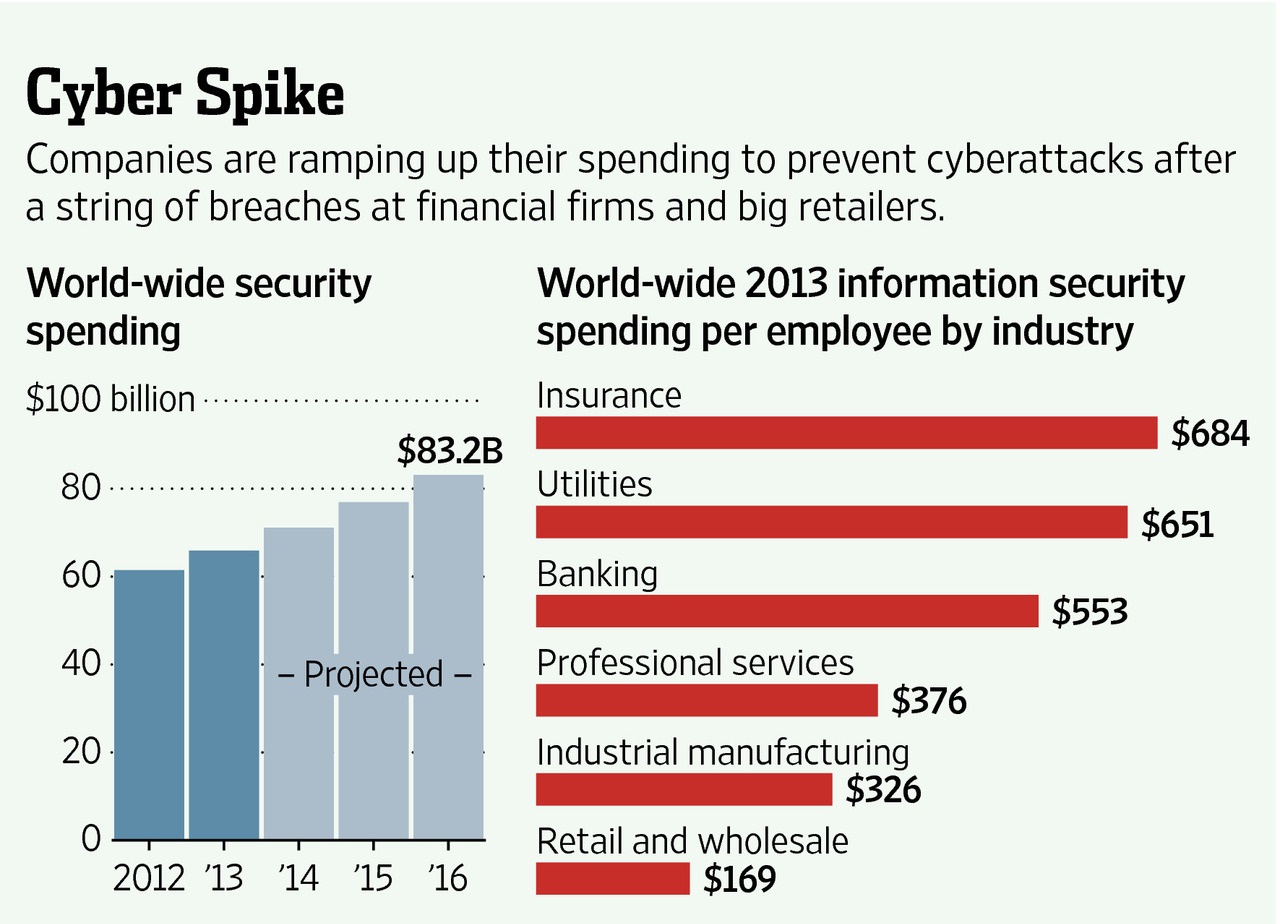Introduction
Cybersecurity insurance has become increasingly important in today’s digital landscape. With the rise in cyber threats and the potential for significant financial losses, businesses are turning to insurance as a risk management strategy. In the event of a cybersecurity breach, having the right insurance coverage can help mitigate the financial impact and provide assistance in the recovery process.
Cybersecurity insurance, also known as cyber insurance or cyber liability insurance, is a type of insurance that helps protect businesses and individuals from the financial risks associated with cyber incidents. These incidents can include data breaches, ransomware attacks, network intrusions, and other forms of malicious cyber activity.
The importance of cybersecurity insurance cannot be overstated. Cyber attacks can have devastating consequences for businesses, including financial losses, damage to reputation, and legal liabilities. Recovering from a cyber attack can be a costly and complex process, involving forensic investigations, data recovery, legal fees, and customer notification.
By having cybersecurity insurance, businesses can transfer some of these financial risks to the insurance provider. In the event of a cyber incident, the insurance policy can cover expenses related to data breach response, investigation costs, legal fees, public relations efforts, and even financial losses resulting from business interruption.
Without cybersecurity insurance, businesses may struggle to cover these expenses on their own, putting their financial stability and reputation at risk. By investing in cybersecurity insurance, businesses can gain peace of mind and have a safety net to rely on in case of a cyber attack.
Additionally, cybersecurity insurance can also be a requirement for businesses that handle sensitive data or work with government agencies or regulated industries. Many industry standards and regulations now mandate the need for cybersecurity insurance as part of a comprehensive risk management strategy.
In the following sections, we will explore the different types of cybersecurity insurance, how to assess your cybersecurity risks, and how to choose the right insurance provider to protect your business from cyber threats.
What is cybersecurity insurance?
Cybersecurity insurance, also known as cyber insurance or cyber liability insurance, is a specialized type of insurance coverage designed to protect businesses and individuals from the financial risks associated with cyber incidents. These incidents can range from data breaches and hacking attacks to identity theft and ransomware.
Unlike traditional general liability insurance policies, which primarily cover physical damages and injuries, cybersecurity insurance focuses specifically on the financial repercussions of cyber incidents. It aims to help organizations recover from the financial losses and liabilities resulting from a cyber attack.
Cybersecurity insurance policies typically provide coverage for a wide range of expenses related to the aftermath of a cyber incident. These can include:
- Data breach response: Expenses associated with notifying affected parties, providing credit monitoring services, and managing public relations efforts.
- Forensic investigations: Costs for hiring cybersecurity experts to investigate the incident and determine the scope of the breach.
- Legal fees: Coverage for legal expenses, including defense costs and settlements, resulting from lawsuits or regulatory penalties.
- Business interruption: Reimbursement for lost income and extra expenses incurred due to the interruption of business operations caused by a cyber incident.
- Extortion and ransom payments: Coverage for payments made to cybercriminals to release compromised information or regain access to systems.
It’s important to note that cybersecurity insurance is not a preventative measure. It does not directly protect against cyber attacks or guarantee complete security. Instead, it serves as a financial safety net in the event of a cyber incident, helping to alleviate the financial burden and facilitate recovery.
Cybersecurity insurance policies vary in terms of coverage limits, deductibles, and the specific types of incidents covered. Some policies may also include additional services, such as risk assessments and incident response support, to help businesses proactively address their cybersecurity vulnerabilities.
Given the complex and ever-evolving nature of cyber risks, it is crucial for businesses to carefully assess their cybersecurity needs and work with insurance providers who can tailor coverage to their specific requirements.
In the following sections, we will delve deeper into the importance of cybersecurity insurance, explore the different types of coverage available, and discuss how to choose the right insurance provider for your business.
The importance of cybersecurity insurance
In today’s digital landscape, where cyber threats are becoming increasingly sophisticated and prevalent, the importance of cybersecurity insurance cannot be overstated. Businesses of all sizes and industries are vulnerable to cyber attacks, and the financial consequences can be significant.
One of the main reasons cybersecurity insurance is essential is the potential financial losses that can result from a cyber incident. The costs associated with a data breach or cyber attack can be staggering. Businesses may face expenses related to incident response, including forensic investigations, legal fees, and notifying affected parties. They may also experience financial losses due to business interruption, reputational damage, and customer churn.
Having cybersecurity insurance can help alleviate the financial burden of these incidents. The insurance coverage can provide financial support to cover the expenses incurred during and after a cyber attack, ensuring that businesses can recover without suffering from severe financial setbacks. It can also enable businesses to access the necessary resources and expertise to mitigate the impact of the attack and minimize future risks.
Furthermore, cybersecurity insurance can also help protect a business’s reputation. In the wake of a cyber attack, customer trust and loyalty can quickly erode. By having appropriate insurance coverage, businesses can demonstrate their commitment to cybersecurity and their ability to handle potential incidents. This can help reassure customers, partners, and other stakeholders that the business has taken the necessary measures to protect their data and respond effectively to cyber threats.
Cybersecurity insurance also plays a vital role in compliance with industry regulations and standards. Many sectors, such as healthcare and financial services, have specific legal requirements regarding data protection and cybersecurity. Having insurance coverage that aligns with these requirements can help businesses meet their compliance obligations and avoid potential penalties or legal consequences.
Moreover, cybersecurity insurance encourages proactive risk management. To obtain coverage, businesses are often required to undergo thorough risk assessments and implement robust cybersecurity measures. This process can help organizations identify and address vulnerabilities, strengthen their security posture, and reduce the likelihood of a successful cyber attack.
Overall, cybersecurity insurance provides businesses with a safety net and peace of mind in an increasingly risky digital landscape. It enables organizations to transfer some of the financial risks associated with cyber incidents to insurance providers, ensuring they have the necessary financial resources to recover and continue operating in the event of a cyber attack.
In the following sections, we will explore the different types of cybersecurity insurance coverage available and discuss how to assess your cybersecurity risks to determine the appropriate level of coverage for your business.
Common types of cybersecurity insurance
Cybersecurity insurance policies come in various forms, each offering different types of coverage to address specific cyber risks. It’s essential for businesses to understand the common types of cybersecurity insurance available so they can choose the coverage that best suits their needs:
- First-party coverage: This type of insurance covers the expenses that a business incurs directly as a result of a cyber incident. It typically includes coverage for costs related to data breach response, forensic investigations, business interruption, and reputational harm. First-party coverage helps businesses navigate the immediate aftermath of a cyber attack and aids in their recovery.
- Third-party coverage: Third-party coverage focuses on protecting businesses from claims made against them by customers, clients, or other parties affected by a cyber incident. It typically covers legal fees, settlements, and judgments resulting from lawsuits related to data breaches, privacy violations, or intellectual property theft. Third-party coverage is essential for businesses that handle customer data or provide services to clients, as it shields them from potential liabilities arising out of a cyber incident.
- Data breach liability coverage: This type of coverage specifically addresses the financial and legal liabilities associated with a data breach. It helps businesses cover expenses such as legal fees, notification costs, credit monitoring services, and potential regulatory fines. Data breach liability coverage is vital for businesses that handle sensitive customer information, as it helps protect them from the financial impact of a data breach.
- Cyber extortion coverage: Cyber extortion coverage is designed to protect businesses from extortion-related expenses incurred during a cyber attack. It typically covers ransom payments, as well as the costs associated with crisis management, negotiation services, and forensic investigation. Cyber extortion coverage provides businesses with the financial resources and support they need to respond to ransomware attacks and other forms of digital extortion.
- Network security liability coverage: This type of coverage focuses on protecting businesses from lawsuits related to network security failures and the resulting unauthorized access to sensitive data. Network security liability coverage typically covers legal fees, settlements, and judgments arising from these incidents. It is particularly relevant for businesses that manage large amounts of customer data or handle online transactions.
It’s important for businesses to assess their unique cybersecurity risks and consider the potential financial impact of different types of cyber incidents. This evaluation can help them determine which types of cybersecurity insurance coverage are most relevant and appropriate for their specific needs.
In the next section, we will explore how to assess your cybersecurity risks and identify the vulnerabilities that require insurance coverage.
Assessing your cybersecurity risks
Assessing cybersecurity risks is a critical step in determining the appropriate cybersecurity insurance coverage for your business. It involves identifying and evaluating potential threats and vulnerabilities to your organization’s information systems and data. By conducting a comprehensive risk assessment, you can gain insight into your specific cyber risks and make informed decisions about the level of coverage you need.
To assess your cybersecurity risks effectively, consider the following steps:
- Identify and classify your data: Determine what types of data you collect, store, and process. This includes identifying sensitive customer information, intellectual property, financial records, and any other data that, if compromised, could lead to significant harm or legal repercussions.
- Evaluate your current security measures: Review your existing cybersecurity practices and measures to determine their effectiveness. This includes assessing your network security, access controls, encryption protocols, employee training, and incident response procedures. Identify any potential weaknesses or vulnerabilities that may need additional attention.
- Assess potential threats: Identify the specific threats that your business may face, such as malware attacks, phishing attempts, ransomware, or insider threats. Stay informed about the latest cyber threats and attack vectors that are relevant to your industry and business sector.
- Consider your industry-specific risks: Certain industries may have unique cybersecurity risks and compliance requirements. For example, healthcare organizations must comply with HIPAA regulations, while financial institutions must adhere to stringent data protection standards. Understand the specific risks and regulations applicable to your industry.
- Conduct vulnerability assessments: Regularly perform vulnerability assessments and penetration tests to identify weaknesses and potential entry points for cyber attackers. This will help you understand where your most critical vulnerabilities lie and prioritize necessary security improvements.
- Review your third-party relationships: Assess the cybersecurity practices of your vendors, suppliers, and other third-party partners who may have access to your data. Ensure they have robust security measures in place to prevent potential breaches that could impact your business.
By conducting a comprehensive assessment of your cybersecurity risks, you can gain a better understanding of your organization’s vulnerabilities and the potential impact of a cyber attack. This valuable insight will allow you to make informed decisions about the cybersecurity insurance coverage you need to protect your business.
In the following section, we will discuss how to tailor your cybersecurity insurance coverage to align with your specific risks and requirements.
Tailoring your cybersecurity insurance coverage
When it comes to cybersecurity insurance, one size does not fit all. Every business has unique cybersecurity risks and requirements that need to be addressed through tailored insurance coverage. By customizing your cybersecurity insurance policy, you can ensure that it aligns with your specific risks and provides adequate protection for your organization. Here are some key considerations to help you tailor your cybersecurity insurance coverage:
- Evaluate your specific risks: Based on your cybersecurity risk assessment, identify the specific threats and vulnerabilities that your business faces. Consider factors such as the type of data you handle, your industry regulations, and potential consequences of a cyber incident. This will help you determine the coverage limits and types of coverage that are most relevant to your organization.
- Assess your current security measures: Review your existing security controls and measures to identify any gaps or areas of improvement. Look for security technologies, such as firewalls, intrusion detection systems, and encryption mechanisms, that can help mitigate the risks associated with cyber threats. Demonstrating strong security practices can also impact the cost and availability of cybersecurity insurance coverage.
- Consider industry-specific requirements: Depending on your industry, you may have specific legal or regulatory requirements related to data protection and cybersecurity. Ensure that your cybersecurity insurance policy addresses these requirements and provides coverage for any potential liabilities specific to your industry.
- Understand policy exclusions: Carefully review the policy exclusions to understand what is not covered by your cybersecurity insurance. Some policies may exclude certain types of cyber incidents or have specific limitations on coverage. Make sure to negotiate and clarify any ambiguities or gaps in coverage to ensure you are adequately protected.
- Work closely with your insurance provider: Collaborate with your insurance provider to customize the policy to your specific needs. Provide them with accurate and detailed information about your cybersecurity practices and risk management strategies. This will enable them to offer appropriate coverage options and help you make informed decisions.
- Regularly review and update your coverage: As your business evolves and new cyber risks emerge, it is important to regularly review and update your cybersecurity insurance coverage. Stay informed about the latest cyber threats and technological advancements to ensure that your coverage remains relevant and effective.
Remember that cybersecurity insurance is just one component of a comprehensive risk management strategy. It should be complemented by robust cybersecurity practices, employee training, incident response plans, and proactive monitoring of your network. By integrating these measures, you can enhance your overall cyber resilience and reduce the likelihood of cyber incidents.
In the next section, we will discuss how to choose the right cybersecurity insurance provider for your business.
How to choose the right cybersecurity insurance provider
Choosing the right cybersecurity insurance provider is crucial for ensuring that your business receives comprehensive coverage and support in the event of a cyber incident. With numerous insurance providers in the market, it’s important to consider several factors to make an informed decision. Here are some key considerations to help you choose the right cybersecurity insurance provider:
- Expertise and specialization: Look for insurance providers that have expertise and specialization in cybersecurity insurance. They should have a deep understanding of the evolving cyber risks and the specific needs of your industry. A provider with relevant experience can offer tailored coverage and provide valuable insights and risk mitigation strategies.
- Financial stability: Cybersecurity incidents can have significant financial implications, so it’s important to choose an insurance provider that is financially stable and capable of meeting their policy obligations. Assess their financial ratings and stability to ensure they have the resources to support you in the event of a claim.
- Coverage terms and limits: Evaluate the coverage terms and limits offered by the insurance provider. Consider the specific risks identified in your risk assessment and ensure that the policy provides sufficient coverage for your needs. Review the policy exclusions and limitations to understand any potential gaps in coverage.
- Claims process and support: Understand the claims process and the support provided by the insurance provider in the event of a cyber incident. A responsive and efficient claims process can make a significant difference in your ability to recover quickly. Look for providers that offer proactive incident response support, including access to cybersecurity experts, forensic investigations, and legal assistance.
- Value-added services: Some insurance providers offer value-added services, such as risk assessments, training resources, and incident response planning. These additional services can help strengthen your organization’s cybersecurity posture and mitigate potential risks. Consider whether these services are important to your business and if they are included as part of the insurance package.
- Pricing and affordability: Assess the pricing structure of the insurance provider and compare it to your budget. Consider the cost of the policy in relation to the coverage offered and the value provided. It’s important to find a balance between affordability and the level of protection required by your business.
- Reputation and customer reviews: Research the reputation of the insurance provider and read customer reviews and testimonials. Look for feedback on their claims handling process, responsiveness, and overall customer satisfaction. A reputable and reliable insurance provider is more likely to provide quality coverage and support.
Take the time to thoroughly evaluate multiple insurance providers, compare their offerings, and ask questions to ensure that they can meet your specific cybersecurity insurance needs. Consult with insurance brokers or seek recommendations from industry peers who have experience with cybersecurity insurance.
Choosing the right insurance provider is a crucial step in effectively managing your cybersecurity risks. By partnering with a reliable and knowledgeable provider, you can confidently protect your business from the financial impacts of cyber incidents.
In the next section, we will discuss how cybersecurity insurance fits into overall risk management strategies.
Cybersecurity insurance and risk management strategies
Cybersecurity insurance is an essential component of a comprehensive risk management strategy. By incorporating cybersecurity insurance into your overall risk management approach, you can effectively address and mitigate the financial impact of cyber threats. Here’s how cybersecurity insurance fits into risk management strategies:
Risk identification and assessment: As part of your risk management process, you identify and assess potential risks and vulnerabilities to your organization’s information systems and data. This includes considering both internal and external threats. By conducting a comprehensive cybersecurity risk assessment, you can identify the specific cyber risks your business faces and determine the appropriate level of cybersecurity insurance coverage needed.
Risk mitigation: Risk mitigation involves implementing security measures and controls to reduce the likelihood and impact of cybersecurity incidents. This can include implementing strong access controls, encryption technologies, employee training programs, and implementing best practices such as regular software updates and patch management. The goal is to minimize the potential risks and vulnerabilities as much as possible, and cybersecurity insurance complements these efforts by providing coverage and financial support in case these preventive measures fail.
Risk transfer: Cybersecurity insurance enables businesses to transfer some of the financial risks associated with cyber incidents to an insurance provider. By obtaining adequate coverage, organizations can protect themselves from the potential financial losses resulting from cyber attacks. This transfer of risk allows businesses to focus on their operations knowing that they have a safety net in place should a cyber incident occur.
Incident response and recovery: Despite best efforts, no organization is immune to cyber threats. In the event of a cyber incident, an effective incident response plan is crucial to minimize damage and facilitate quick recovery. Cybersecurity insurance can provide access to incident response support, including cybersecurity experts who can assist in investigating and mitigating the incident. Insurance coverage can help cover the costs of forensic investigations, legal fees, customer notifications, and public relations efforts, aiding in the recovery and restoring business operations.
Risk monitoring and adaptation: Cyber risks are continuously evolving, so it’s important to regularly monitor and adapt your risk management strategy accordingly. Stay informed about emerging threats, industry best practices, and regulatory changes. Periodically review and update your cybersecurity insurance coverage to ensure it aligns with your evolving risk landscape and business needs.
Cybersecurity insurance should be considered as one aspect of a layered approach to risk management. It complements other risk reduction strategies, such as implementing robust cybersecurity measures, conducting regular risk assessments, and providing ongoing employee training. By integrating cybersecurity insurance into your risk management strategy, you can enhance your organization’s resilience and protect your financial well-being in the face of cyber threats.
In the final section, we will summarize the main points discussed in this article.
Understanding the limitations of cybersecurity insurance
While cybersecurity insurance is a valuable tool for mitigating the financial risks of cyber incidents, it is essential to understand its limitations. Cybersecurity insurance cannot provide complete protection or eliminate all risks associated with cyber threats. Here are some important factors to consider regarding the limitations of cybersecurity insurance:
Coverage limitations: Every cybersecurity insurance policy has certain limitations and exclusions. These can vary from policy to policy and may exclude certain types of cyber incidents or specific circumstances. It is crucial to review the policy carefully to understand the extent of coverage and any potential gaps or limitations. Ensure that your policy covers the specific risks you face and aligns with your business needs.
Cost considerations: Cybersecurity insurance coverage comes at a cost, and organizations need to balance the cost of the premiums against the level of protection provided. Higher coverage limits and broader coverage options generally come with higher premium costs. Businesses should evaluate their budget and weigh the potential financial impact of cyber incidents against the cost of the insurance coverage to determine the appropriate level of coverage they can afford.
Policy requirements and risk management: Insurance providers may have specific requirements to qualify for coverage, such as implementing specific security controls and maintaining risk management practices. Failure to meet these requirements could result in limited coverage or even denial of claims. It is crucial for businesses to fulfill these requirements to maintain the validity of their coverage and maximize the benefits provided.
Duration and renewal: Cybersecurity insurance policies typically have a specified duration, and coverage may not extend beyond the policy period. Organizations need to consider the renewal process and ensure continuous coverage to remain protected. Changes in the cybersecurity landscape or significant incidents may affect the availability and coverage offered at the time of renewal. Regularly reassess your insurance needs and work with your insurance provider to update your coverage as necessary.
Not a substitute for cybersecurity practices: Cybersecurity insurance should not replace robust cybersecurity practices and risk management efforts. Insurance coverage provides financial support, but it does not prevent or address the root causes of cyber incidents. It is crucial for organizations to prioritize strong cybersecurity measures, consistent employee training, and proactive risk management to minimize the likelihood and impact of cyber attacks.
Potential claim challenges: While cybersecurity insurance is meant to assist with financial recovery after a cyber incident, there may still be challenges in the claims process. Insurance providers may require thorough documentation of the incident and its impact, and there may be disputes over coverage or claims. It is important to understand the claims process, maintain accurate records, and work closely with your insurance provider to navigate any claim challenges effectively.
By understanding the limitations of cybersecurity insurance, businesses can set realistic expectations and make informed decisions when it comes to their risk management strategies. While it provides valuable financial protection, it should be seen as part of a broader approach to cybersecurity and risk mitigation.
In the final section, we will summarize the main points discussed in this article.
Conclusion
Cybersecurity insurance is a vital tool in today’s digital landscape, helping businesses mitigate the financial risks associated with cyber incidents. By understanding the various types of cybersecurity insurance coverage and tailoring it to their specific needs, organizations can enhance their resilience to cyber threats.
Through a comprehensive risk assessment, businesses can identify their unique cybersecurity risks and vulnerabilities. This assessment serves as a foundation for determining the appropriate level of cybersecurity insurance coverage. Assessing risks and implementing robust cybersecurity measures in conjunction with cybersecurity insurance creates a multi-layered risk management strategy that strengthens overall security posture.
Choosing the right cybersecurity insurance provider is essential. Organizations should select a provider with expertise in cybersecurity insurance, financial stability, and a track record of responsive claims handling. Providers that offer value-added services, such as risk assessments and incident response support, can add significant value to a cybersecurity insurance policy.
It’s crucial to recognize that cybersecurity insurance has its limitations. Coverage terms, policy exclusions, and the need for ongoing risk management efforts are among these limitations. It is important to understand the policy limitations, budget for the cost of premiums, and continuously reassess and update coverage to keep pace with evolving cyber risks.
Ultimately, cybersecurity insurance should be seen as a part of a broader risk management strategy that includes proactive cybersecurity measures, employee training, incident response plans, and ongoing risk monitoring. By integrating cybersecurity insurance into this strategy, businesses can effectively manage their cyber risks, minimize financial impacts, and protect their reputation.
In an ever-evolving digital landscape, cybersecurity insurance provides businesses with the financial safety net they need to navigate the potential fallout of a cyber incident. Balancing preventive measures, risk mitigation strategies, and the right insurance coverage will enable organizations to stay resilient in the face of evolving cyber threats.

























